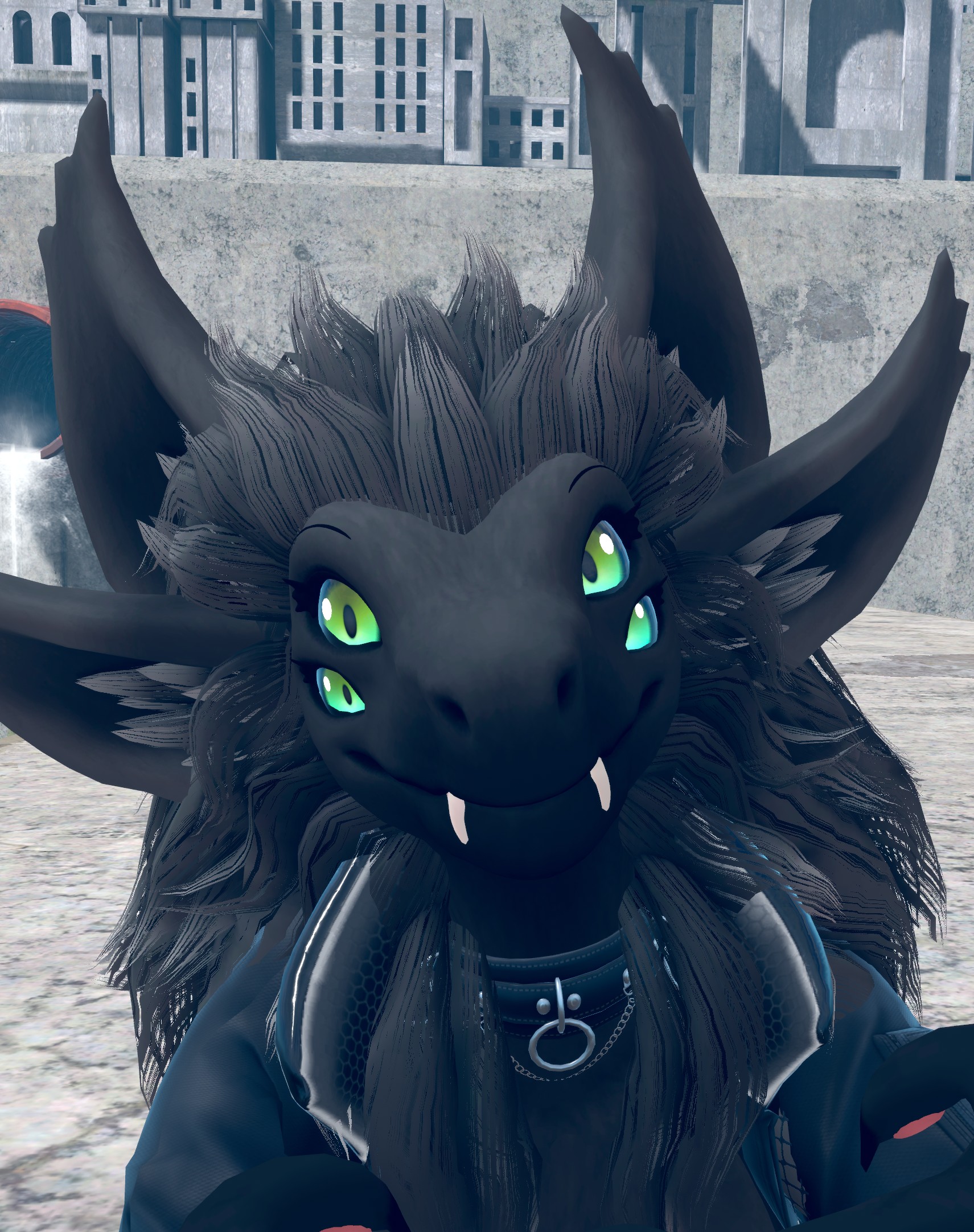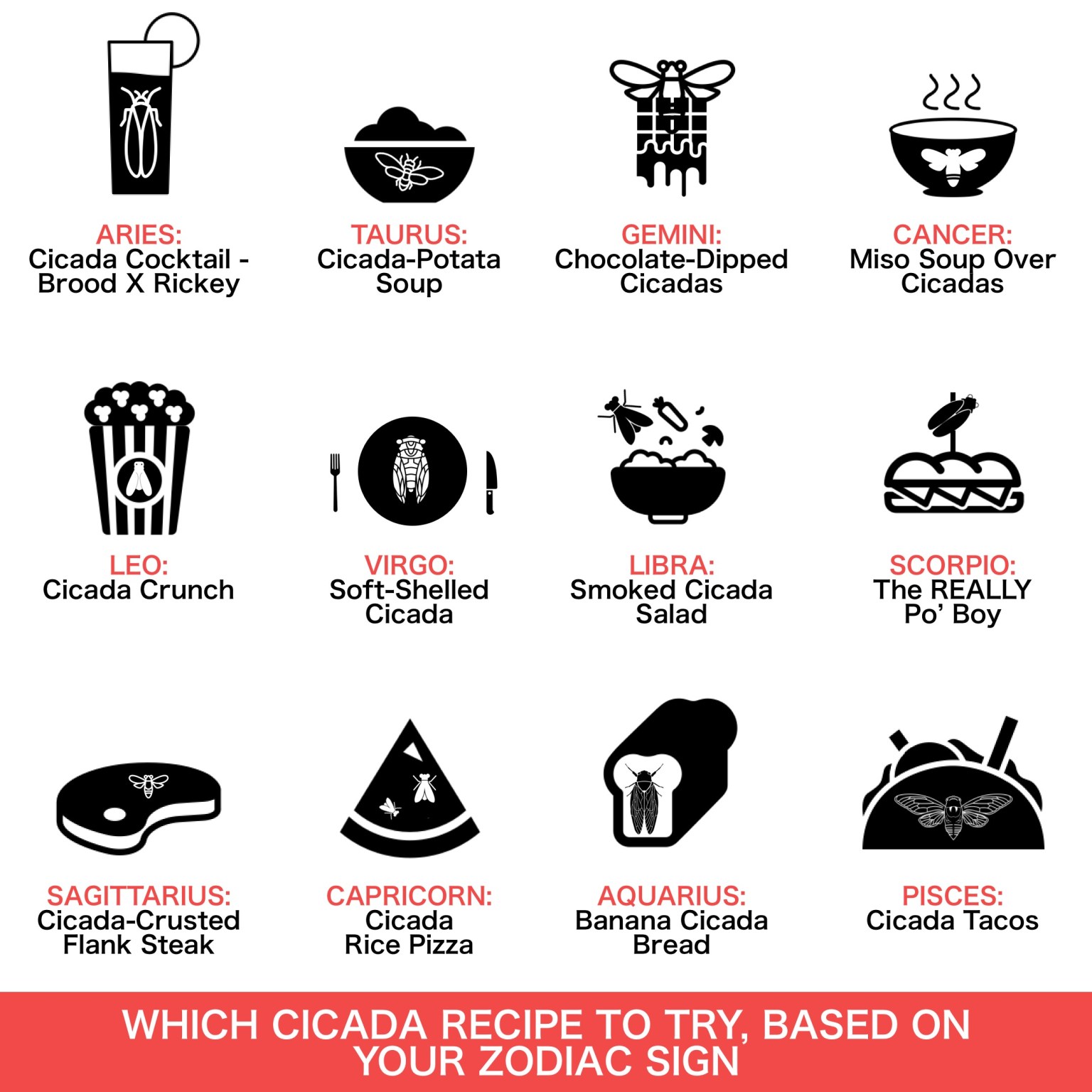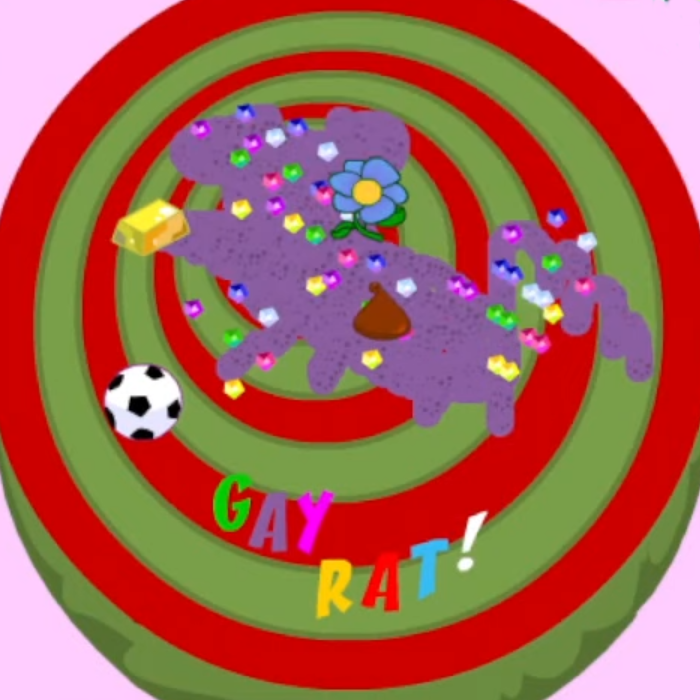So like, do you have to de-shell them or do you just eat them exoskeleton and all? Given that their diet is fresh sap and xylem water, they seem like pretty clean little bugs to eat. I’d try it.
I feel like this is what needs to be stated when talking about eating bugs. If you’re giving me bugs that eat what amounts to sugar water then I’m much less concerned about bug poop.
Texture seems important too, and the thought of a sap eating bug that has a similar texture to shrimp… Doesn’t sound all that bad. I’m honestly half tempted to try to test it when they emerge.
Seems like there’s a fungus that’s known to eat their ass, but as long as they’re free of that it seems fair game.
Where can I find this fungus?

In its ass
deleted by creator
Wouldnt shelling leave a gooey blob anyway?
Yeah how do you get a cicada out of its shell and still have something that is meaningfully a cicada?
Very gingerly i would think
Maybe remove it after cooking? How would they get to shrimp-like texture otherwise?
Unless they mean shrimp-like with the shell still on, which is silly.
Go ahead and eat them how you want to i’m just gonna sit here and not ;)
“Thlimy yet, thatithfying.”
You made me say it out loud
(╭☞´ิ∀´ิ)╭☞
Now kith
Pumbaa doesn’t lisp…
Igor doeth.
deleted by creator
That last sentence 🤮
OK, I gotta ask: was it alive?
deleted by creator
I don’t usually voluntarily eat bugs but if someone put that in front of me then I’d be curious enough to try it.
Inb4 “crab, shrimp and lobsters are basically bugs”. Yeah, I don’t usually eat them though. I used to love shrimp as a kid, but somewhere along the way I stopped enjoying the flavor. They aren’t bad, just… Idk. Just not a fan anymore.
crab, shrimp and lobsters are basically bugs
You see this all the time, but they’re really not. With crab, shrimp, and lobster you usually extract the meat and just eat that. Bugs are mostly tiny so you eat the whole thing. Very different texture, not to mention taste.
Skwimps is bugs
Link to the rest of the cookbook? I hear a feast is coming…
I did not find the book but I did find this
The biggest crime here is putting rice on pizza
In Borneo they fry them. Crunchy snacks anyone?
Am a cancer, can confirm the cicada miso sounds like the best of that list.
That or the cicada po boy. Exoskeleton off, a good breading, some remoulade sauce and a fresh roll sounds pretty good if their texture is shrimp like.
Gotta get me them tacos
I wonder what the ethics of marinating a creature alive is. Like, I’d be willing to try eating a bug, but I don’t want my meal to suffer any more than it has to. Then again, I’m not sure Worcestershire is acidic enough to hurt it.
I wonder what would happen if you sat in a bathtub of Worcestershire for a few hours
It’ll kill them, but not because it’s acidic. Insects breathe through openings in their abdomens called spiracles. They’ll slowly suffocate if the spiracles are blocked, like from being submerged.
Oh how thoughtful. Means no need to poke holes to let the marinade seep in
Yea I guess I’m one of the few that hate to see even bugs suffer.
Are most insects (and shrimp for that matter) actually able to feel? I mostly heard they are best described as automatons, like low-level robots made by nature. My roomba might have higher “brain” function than a cicada, but I don’t know about newer studies.
Theory of mind is a diverse field with many different views and consequences. I land in the 4e camp of epistemology, so I would say experience of insect are equally experiences of conciousness as human experiences. When you let go of human centric parameters the world takes on a very different visage. I liked this article about the 4e theory and it’s implication on the breaking down of the divide between plants and conciousness. https://worldsensorium.com/what-plants-are-saying-about-us/
Oof, what a read :/ I’m very familiar with plants as I’ve studied them for years. Please don’t take this article serious. I wish there was more research communication of how cool plants are and how they function/live. But this article is not the way to go. This is pseudoscience. Most of this is just twisting words to sound nice without any real understanding underneath. The following are my thoughts while I read the article:
Interesting read, although when I stumbled upon this I started to have doubts: “a skill that surely helped on the savannah when we had to recognize a tiger hiding in the bushes from just a few broken stripes.” There were and are no tigers in Africa where humans evolved. Why use such a obviously bullshit example? The author automatically discredits themself.
The rest of the article doesn’t get better, often talking in suggestive language like “so the plants know which way is up”. What does know mean in this context? The author implies that there is some knowing consciousness in plants. “They can distinguish self from non-self, stranger from kin.” Oh really? Is this really what they are doing? Or are these maybe just responses to various environmental pressures (which are different if there are plants of the same species around)?
“Plants chat among themselves and with other species. They release volatile organic compounds with a lexicon, Calvo says, of more than 1,700 “words”—allowing them to shout things that a human might translate as “caterpillar incoming” or “*$@#, lawn mower!”” OK, we’ve reached pure anthropomorphism now. I could write the same text about smart home computers communicating with each other suggesting that they are conscious and have feelings. This only distorts the whole discussion of how we could think of plant consciousness differently from animal consciousness. But that’s what the article tried to do in the first place, isn’t it?
“If a plant could respond to sensory information on a one-to-one basis—when the light does x, the plant does y—it would be fair to think of plants as mere automatons, operating without thought, without a point of view. But in real life, that’s never the case. Like all organisms, plants are immersed in dynamic, precarious environments, forced to confront problems with no clear solutions, betting their lives as they go.” OK, so they are much more complex systems than mere “stimulus in, reflex out” sort of system. But why does this conclude anything? They could be highly skilled, adaptable automatons? Like computers.
And then they try to reverse argue the following “If the representational theory of the mind says that plants can’t perform intelligent, cognitive behaviors, and the evidence shows that plants do perform intelligent, cognitive behaviors, maybe it’s time to rethink the theory.” Who said plants can perform intelligent, cognitive behaviors in the first place? The article by actual plant researchers you just dismissed without any arguments claims the opposite of that!
"So maybe we should question the very premise that neurons are needed for cognition at all.” Yes, I’m all up for that. But we need some basis for this discussion and just saying look plants are so cool! doesn’t cut it.
The article then spends a lot of time romanticizing plants like this “By using these flows to guide their movements, plants accomplish all kinds of feats, such as “shade avoidance”—steering clear of over-populated areas”. How is this different from a trained machine though?
“Machines are made—one and done—but living things make themselves, and they have to remake themselves so long as they want to keep living.” Maybe the real revelation is that plants are living beings and machines are not? Have you been defining life after all instead of conscious beings? Because what has been written about plants here certainly applies to fungi, bacteria, archaea and protists in some way or another. Even viruses adapt in some way, don’t they? But it would be much harder to argue for conscious bacteria. It’s probably easier for you to stick to plants.
“You’re organized to have a certain autonomy, and that immediately carves out a world or a domain of relevance.” Thompson calls this “life-mind continuity.” Or as Calvo puts it, echoing the 19th-century psychologist Wilhelm Wundt, “Where there is life there is already mind.”” Oh OK, let’s just define life = mind and we’re done with the discussion altogether.
Well, back to plants: “They don’t have brains, but according to Calvo they have something just as good: complex vascular systems, with networks of connections arranged in layers not unlike a mammalian cortex.” This whole thing reads like someone has never thought much of plants and discovered how fascinating they are. And now they try to prove how cool they are by relating them to humans with some loose facts they picked up. Wait till you learn about how ingenious photosynthesis is and how clever C4 and CAM plants are…
This section “As Calvo sums it up, “They can count to five!”” is just further confusing human behavior with plants. How do you know they count to five and not just use some change in chemical/electrical gradients to determine that enough hairs have been triggered? This is just bullshitting the reader into thinking plants are conscious.
““Clearly,” Thompson says, “plants are self-organizing, self-maintaining, self-regulating, highly adaptive, they engage in complex signaling among each other, within species and across species, and they do that within a framework of multicellularity that’s different from animal life but exhibits all the same things: autonomy, intelligence, adaptivity, sense-making.”” OK, we are past the point where they even try discussing anything in depth and just say how cool plants are, therefore they are conscious. No shit, all life forms (except probably viruses) are self-organizing, self-maintaining, self-regulating, highly adaptive organisms who interact with the world in complex ways. Just because you use some cool sounding words you don’t prove anything.
I’m curious what these people will say when they discover that half the human body is actually non-human cells who also self-organize, self-maintain and self-regulate. The billion consciousnesses of the human body!! We are connected to everything through our uber-consciousness!
“They have no private, conscious worlds locked up inside them. But according to 4E cognitive science, neither do we. “The mistake was to think that cognition was in the head,” Calvo says. “It belongs to the relationship between the organism and its environment.”” This is interesting. So our consciousness is not in our head not even inside us but in our interaction with our environment? Nice philosophical thought experiment but how does this translate to our real world? Not really. Maybe we shouldn’t use personal pronouns altogether and stop thinking of us as individuals because we are not distinct subjects. We are only subjects in the relation to our environment! What?!
The end of the article makes nearly a good point just to dive further into anthropomorphism again: “But more to the point, the plants appeared to me now not as objects, but as subjects—as living, striving beings trying to make it in the world—and I found myself wondering whether they felt lonely in their pots, or panicked when I forgot to water them, or dizzy when I rotated them on the windowsill.” You were so close. Yes, plants are obviously not just lifeless objects!! Who would have thought? Is this the revelation of the article? But why then anthropomorphize them in the same breath? This is sooo frustrating to read!
This whole article is basically just semantics with pseudoscience and some scientific facts about plants sprinkled in.
Have you heard the sounds these make? They don’t care if you suffer.
Yes, good point, but what worries me more is that the bullet point is missing where it says to gut the corpses and remove the cicada intestines and poop. Surely that’s standard when eating… anything really. Make it poop-free?
The Worcester sauce would mask all that flavour, leaving only texture. 💀
I think the breading would mask the texture fortunately. I can imagine eating this and having no clue what it was.
Wouldn’t the sealed container kill them?
I would imagine that’s not much of a concern considering they’re about to be deep fried.
We tend to kill most things shortly before eating them so yeah
The future apocalypse is looking at least edible…
We also need to start spreading grass hopper, cockroach, ant, moth and fly recipes.
https://www.montclair.edu/newscenter/2021/05/19/cicadas-safe-to-eat-sustainable-delicious-recipes/
spoiler
After 17 years underground, billions of periodical cicadas known as Brood X are set to emerge, and we hope you’ve brought your appetite. See, a swarm of cicadas may sound scary, but they’re quite harmless and, in actuality, can be a new food to introduce into your diet. Calling all adventurous eaters!
Assistant Professor of Anthropology Cortni Borgerson, whose research focuses on natural resource use, sustainability and food security, says that the fact that they make a tasty snack is just one of the wonders of cicadas.
“Brood X cicadas are one of the world’s most incredible animal phenomena,” says Borgerson. “In a year where few of us may be traveling to see natural wonders like Africa’s great migration, or the elephant gathering of Sri Lanka, we are incredibly privileged to have this rare spectacle occurring in our very own backyards. Brood X provides an infusion of nutrients into the ecosystem, and humans have been enjoying this event for its sights, sounds and taste for millenia.”
Eating cicadas (and other bugs) is sustainable and nutritious
Many may associate the idea of eating bugs with survival reality shows, but consider this: Not only can insects actually make for a great and tasty bite when thoughtfully prepared (see recipes below), they’re also a nutritious meat alternative high in protein and minerals, and are a sustainable food source. Indeed, they may be small, but bugs can have a mighty big impact on humans.
“Insects are an important source of food for more than two billion people on Earth, including many food cultures within the United States,” says Borgerson. “These little meats are not only a mainstream food source, they’re also a more sustainable choice than other species of livestock, which can require a lot of land, water and feed. Embracing food diversity and incorporating insects and other traditional foods into our diets isn’t only a great way to connect with our cultures and our natural environments, it’s also a key step toward living sustainably.”
Where to find cicadas to harvest
Annual cicadas can be found toward the end of the summer, emerging mostly in parks, forests, other wooded areas and even in your backyard. These are safe places to collect them once they’ve shed; basically anywhere you’d feel safe keeping a garden is a good bet. Avoid collecting and eating cicadas from places with a history of industrial use.
As for Brood X, you’ll need a map to find these periodical cicadas – and your best bet is to look for where they most commonly popped up last time around. The U.S. Fish and Wildlife Service offers a map of where the Brood X cicadas are expected to emerge, by county. For a breakdown by towns in New Jersey, check out this comprehensive list from NJ.com.
“You’ll be able to hear when you’re close,” says Borgerson. “These cicadas live as nymphs underground for 17 years, and then tunnel up through the ground to the surface where they shed into their winged adult phase, living only 4-6 weeks. Cicada are tastiest in their teneral stage, which is right after they’ve shed into their adult forms, but are still pale white before their exoskeletons have hardened.
“So at dusk, look for those wingless nymphs and enjoy the incredible show as they shed and transform and slowly inflate their new wings. Then pop a few into a bag and take them home to freeze for about 30 minutes before you prepare them.”
Cicadas, a gateway bug to entomophagy
If you’re curious about entomophagy (the practice of eating insects, especially by humans), cicadas are a great place to start. Unlike other bugs that can have “crunchy exoskeletons and wings,” teneral cicadas have a nutty, green, almost peeled shrimp-y look, taste and texture similar to the crustaceans.
“You can add them to any of your favorite dishes,” says Borgerson. “They don’t need peeling or extensive prepping, just pan fry them or parboil and toast them in the oven, and then use them like you would any of their crustacean relatives. Personally, I love them by themselves on toothpicks as an appetizer or in tacos, where you can use the toppings to bring out a lot of their green spring flavors.”
Before you know it, you may enjoy eating cicadas so much that you’ll move on to toasted cricket snacks, green ant gin, grasshoppers in chapulines tacos and more. Don’t eat cicadas if you’re allergic to shellfish
Cicadas have a similar chitinous exterior as shellfish, so while there’s no overwhelming evidence that those with allergies have had reactions after eating cicadas, there’s not much research in its favor, either. “A shellfish allergy increases the likelihood that you will be allergic to cicada, so it’s better to be safe than sorry and abstain from land arthropods if you can’t eat their sea swimming cousins.”
Can animals safely eat cicadas?
OK, so what happens if you’re so busy munching on your new favorite snack that you don’t realize your beloved pet just ate a cicada or two (or more)? “Many mammals and birds are about to feast on the periodic cicadas, so don’t be surprised if your pet cat, dog, or backyard fowl indulge a little as well,” says Borgerson. “There’s nothing to be worried about — cicadas are high in protein and their chitin is great for gut health.”
If you’re curious about entomophagy (the practice of eating insects, especially by humans), cicadas are a great place to start. Unlike other bugs that can have “crunchy exoskeletons and wings,” teneral cicadas have a nutty, green, almost peeled shrimp-y look, taste and texture similar to the crustaceans.
“You can add them to any of your favorite dishes,” says Borgerson. “They don’t need peeling or extensive prepping, just pan fry them or parboil and toast them in the oven, and then use them like you would any of their crustacean relatives. Personally, I love them by themselves on toothpicks as an appetizer or in tacos, where you can use the toppings to bring out a lot of their green spring flavors.”
Cicadas have a similar chitinous exterior as shellfish, so while there’s no overwhelming evidence that those with allergies have had reactions after eating cicadas, there’s not much research in its favor, either. “A shellfish allergy increases the likelihood that you will be allergic to cicada, so it’s better to be safe than sorry and abstain from land arthropods if you can’t eat their sea swimming cousins.” Can animals safely eat cicadas?
I’m definitely giving these a try this year.
DEM LIBURLS TRYINA MAKE ME EAT BUGS!!
How you gonna cut off half the recipe?
plz help, my cicadas keep dying before the several hours are up
“Halved, the nymphs reveal a surprisingly meaty, white interior. After eating one that was simply blanched, I thought it resembled what a tofu-filled M&M might taste like, with its crisp shell giving way to a spongy, earthy interior.”
What you have made is hush puppies with a crunch.






















